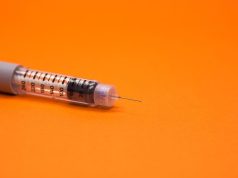Type of medication for opioid use disorder received appears to be associated with age
MONDAY, Nov. 4, 2019 (HealthDay News) — One in three young adults receive medication for opioid use disorder in the 12 months after surviving an overdose, according to a study published online Oct. 4 in the Annals of Emergency Medicine.
Sarah M. Bagley, M.D., from Boston University, and colleagues used administrative data to identify 15,281 individuals aged 18 to 45 years who survived an opioid-related overdose in Massachusetts between 2012 and 2014. Characteristics of young adults were assessed and rates of medication for opioid use disorder were compared for adults aged 18 to 25 versus 26 to 45 years.
The researchers found that 28 percent of patients aged 18 to 21 years, 36 percent of those aged 22 to 25 years, and 36 percent of those aged 26 to 45 years received treatment. For individuals aged 18 to 25 years, median time to buprenorphine treatment was four months compared with four months to methadone treatment and one month to naltrexone treatment. Compared with those aged 22 to 25 and 26 to 45 years, individuals aged 18 to 21 years were less likely to receive methadone (adjusted hazard ratio, 0.60). Compared with those aged 26 to 45 years, individuals aged 18 to 21 years and those aged 22 to 25 years were more likely to receive naltrexone (adjusted hazard ratios, 1.65 and 1.41, respectively).
“These results indicate that age appears to be a factor in the type of medication administered to treat opioid use disorder,” Bagley said in a statement. “It is important that young adults who survive an overdose have access to medication, including when they are treated in the emergency department or in the hospital or outpatient settings. All of these encounters are critical opportunities to engage them in treatment, which can save their life.”
Copyright © 2019 HealthDay. All rights reserved.








